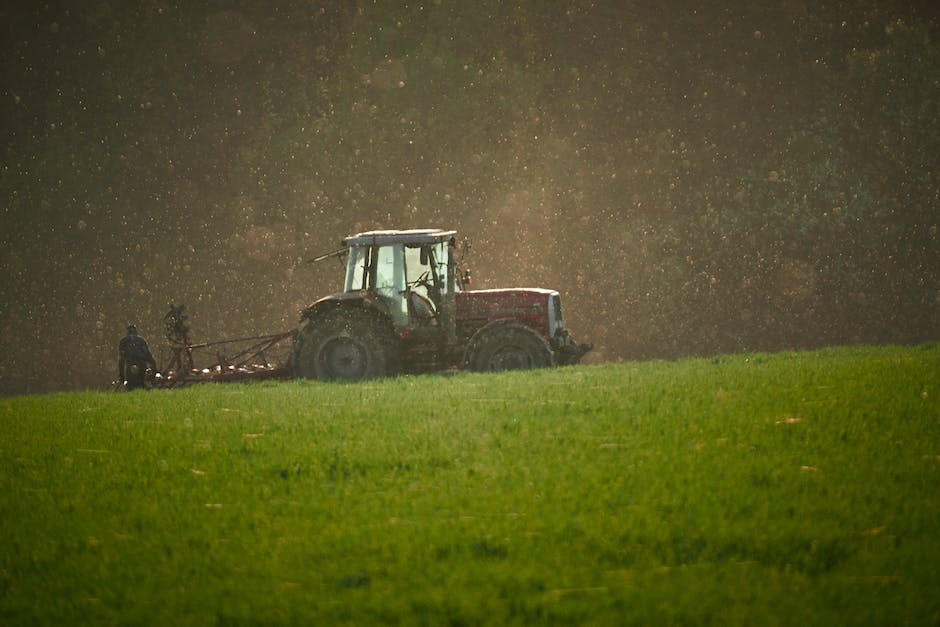

Agridisk
Egypt - Alexandria

The importance of agriculture to increase food security
Description: Agriculture can help reduce poverty, raise incomes, and improve food security for more than 85% of the world's poor, especially those who live in rural areas and mainly work in agriculture. Therefore, agriculture is of paramount importance to achieving the development goals of the country that allocates its land for agriculture. Agriculture is important to economic growth. In 2018, it accounted for 4% of global GDP, and in some least developed countries it can account for more than 25% of GDP. A country that can achieve self-sufficiency in agricultural crops can lead the world, especially with the multiple shocks and global crises that resulted from the Corona pandemic, earthquakes, and financial crises as a result of the Russian-Ukrainian conflicts. In the meantime, import and export can stop, so the state's sufficiency in agriculture is very essential and important. Also, climatic changes increase the decline in crop production, especially in overpopulated areas, which also contain food insecurity. The solution is simple, for the state to seek the help of modern expertise and equipment, so that it can produce the best crops and the highest productivity, and the state and leaders should increase the financing of agricultural lands and encourage their cultivation, as agricultural crops prevent the occurrence of disasters in crises. As the global population continues to expand, the issue of food security stands front and center in discussions about human survival and progress. The cornerstone of this mandate falls squarely on the shoulders of agriculture - a pivotal industry charged with feeding billions of people, while simultaneously grappling with a host of climate, economic, and technological challenges. This exploration delves into the role of agriculture in food security, highlighting its integral contribution in providing accessible, affordable, and stable nutrition to humanity. Additionally, the discourse examines the critical impediments agriculture faces, from climate change to socio-economic concerns, with a discerning lens on their impact on food security. On the flip side, the spotlight will shine on the compelling power of technological innovations and strategic policy interventions, detailing their potential to reshape agriculture and, consequently, escalate our food security. Stepping into the broad and important realm of agriculture, one appreciates its fundamental role in addressing one of humanity's most pressing concerns - food security. As global populations continue to skyrocket, the need to produce sustenance for billions becomes an increasingly salient and multi-faceted issue. It is here, at the crossroads of survival, that the critical spotlight lands on agriculture and its undeniable impact on food security. To begin with, agricultural expansions power the supply side of the world's food equation. Acting as the primary source of food, agriculture provides the nourishment required to sustain a growing population. By enabling the cultivation of a diverse range of plant-based foods and rearing of livestock, agriculture ensures the availability of a variety of food products capable of meeting humans' dietary needs. Recent advancements in agricultural technologies amplified food production, further enhancing its contribution towards food security. A closer inspection reveals agriculture's ability to increase accessibility to food. Agriculture provides income opportunities for rural populations, acting as their primary livelihood source. Through engagement in agricultural activities, individuals generate income, improving their personal food access. Furthermore, developed transportation systems stemming from agriculture help improve food distribution, connecting food-rich areas to those facing scarcity, thereby reducing food access disparities. A key pillar underlining the link between agriculture and food security revolves around its contribution towards enhancing utilization. Herein, the focus doesn't merely rest on the availability and accessibility of food but its nutritional content as well. The cultivation of various crops enables the direct acquisition of essential micronutrients and dietary elements right from the source. Also worth noting is that through the breeding of different livestock types, the nutritional content of food gets significantly diversified, enriching diets and ensuring nutritional security. Considering food stability, another dimension of food security, agriculture's role is undeniable. By securing availability, accessibility, and utilization of food across seasons, agriculture ensures a stable food supply despite fluctuations. Techniques such as crop rotation, preservation, and storage further serve to future-proof food availability. Lastly, one cannot overlook the environmental contributions of sustainable agriculture practices in ensuring long-term food security. Regenerative farming methods, carbon sequestering, watershed protection, and maintaining biodiversity are just a smattering of the eco-beneficial agricultural practices that preserve and improve the earth’s capacity to sustain food production. In conclusion, agriculture embodies a multifaceted tool, conditioned to enhance global food security. It evocatively illustrates humanity's innovative prowess, layered over a robust understanding of natural ecosystems, to cultivate an environment where food is not just a production output but a testament to human resilience and socio-economic facilitation. Indeed, understanding the intertwined relationship between agriculture and food security is vital, not just from an academic lens, but also as an active participant in this global arena. It underpins our collective endeavor towards achieving a world free from hunger and malnutrition - a vision that is within our grasp, given the potential might of agriculture. To maintain the intricate balance between agriculture and global food security, several critical challenges must be addressed. As we comprehend the essential role of agriculture in provisioning our global food needs and its impact on the environment, we inevitably encounter areas of concern that demand immediate attention. Our first formidable adversary is climate change. Global warming is ushering in an era of increased temperature volatility, erratic precipitation patterns, and escalating frequencies of extreme weather events. These factors pose significant threats to agricultural productivity by disrupting vital processes such as germination, flowering, fruit, and grain formation. Additionally, alterations in climate favor the proliferation of pests and diseases, further threatening our food supply. Next, the finite nature of our natural resources puts a ceiling on conventional agricultural intensification. Unsustainable farming practices are depleting freshwater sources and deteriorating the quality of soil on a global scale. The loss of arable land due to erosion, desertification, and urbanization compounds this challenge. Ensuring responsible resource management is crucial to securing our food future. The challenge posed by population growth cannot be overlooked. As the global populace is projected to nearly double by 2050, the pressure to increase agricultural output correspondingly mounts. Simultaneously ensuring increased productivity, nutritional value, and sustainable practices requires innovative approaches and technologies. Biodiversity loss deals another blow to global food security. The monoculture-based intensification of the past century has eroded the genetic diversity within our food crops. This reduction in genetic variability limits the resilience of our farming systems against pests, diseases, and climate change, highlighting the pressing need for conservation and utilization of crop genetic diversity. Lastly, the ill-effects of market distortions present a multifaceted challenge, intersecting economics, policy, and ethics. Unregulated markets may promote unsustainable agricultural practices and amplify disparities in access to food. Further, speculative pricing and market hoarding can trigger food price volatility, threatening food security for millions of the most vulnerable people globally. Tackling these challenges necessitates an integrated, interdisciplinary approach that merges scientific knowledge with socio-economic considerations. Strategies must focus on climate-smart agriculture, sustainable water and soil management, innovative technologies, genetic conservation, and a justice-oriented market regulation framework. The unequivocal commitment to the balance between sustainability and food security can enable avenues to feeding the world while also conserving our precious planet. Technological advancements are consistently being identified as potent tools in mitigating the mentioned challenges and augmenting agricultural productivity, thus immensely contributing to food security. The exploration of these innovations and their roles in agriculture serve as our primary concern in this discourse. Precision agriculture, a promising technological innovation, harnesses data from satellite imaging and advanced sensors to provide farmers with scientific guidance in making farm decisions. This technology optimizes the use of farm resources, reduces waste, and increases crop yields. The geographical information gleaned can predict and adapt to weather changes, provide real-time feedback on nutrient and water needs of the plant, and help detect pests or diseases early. The benefits of this technology span efficiency, productivity, profitability, and sustainability, addressing both economic and environmental aspects of food security. Further, advancements in biotechnology such as genetic modification (GM) and genetically modified organisms (GMOs), although controversial, present solutions to fortifying food security. Through engineered resistance to pests and stressful environmental conditions, these technologies can reduce crop loss, leading to higher and more consistent agricultural yield. Automation and robotics in farming are other pivotal technological advancements in elevating food security. Relevant applications include autonomous tractors, robotic harvesters, and drone technology providing operational accuracy and increased efficiency. These technologies can address the issue of labour scarcity and reduce excessive manual work, particularly important considering the ageing farmer population. The emergence of Vertical Farming is a groundbreaking innovation for producing food in urban spaces. By growing crops in stacked layers within buildings, this practice can considerably reduce the land and water demands of agriculture. Utilizing LED lights for photosynthesis, it allows reliable year-round cultivation independent of weather conditions, while its controlled environment minimizes the necessity for pesticides. Moreover, advancements in agritech such as nanotechnology offer enhanced delivery of nutrients and water to plants, aiding in optimal growth. This technology can also facilitate in targeted delivery of agrochemicals, thus reducing the environmental footprint. Technological innovations for farm waste management, like anaerobic digestion, have shown promise by converting manure into biogas providing farmers an alternate energy source. This not only addresses waste disposal issues but also contributes to circular economy and environmental sustainability. Additionally, the advent of Information and Communication Technologies (ICTs) has revolutionized agricultural practices and food security. For instance, mobile apps provide farmers timely and localized information about weather, farming best practices, market prices, and even connect them to potential buyers. Such easy access to information enhances decision-making, productivity, and market access, thus boosting income and economic stability. Therefore, technological innovations hold the potential to significantly ameliorate food security by making agriculture more productive, efficient, sustainable, and resilient. Nonetheless, the realization of their full potential necessitates addressing the barriers pertaining to access, adoption, policy regulation, and public attitudes. Moreover, the ethical, socioeconomic, and environmental implications of these technologies should be closely examined and deliberated for integrated and sustainable application. To ultimately achieve food security, the integral role of these technological tools must be appreciated and leveraged, yet, within a balanced, holistic and context-specific approach considering the biodiversity, socio-economic, environmental, cultural, and ethical nuances of agriculture. With the previously addressed factors in mind, it becomes vital to scrutinize how strategic policy interventions can bolster the role of agriculture in ensuring food security. First, policies that foster investment in agricultural research and development (R&D) are critically necessary. Such investments are instrumental to spark technological innovations and spearhead progressive methods that enhance agricultural productivity, farm management, and resilience to climatic upheavals. It becomes paramount that policies incentivize public and private sector to invest in R&D through tax benefits or direct funding initiatives, thus accelerating the diplomatic efforts made to secure food globally. Second, establishing secure tenure rights and access to agricultural resources for smallholder farmers, particularly women, through land policies can foster inclusive agricultural growth. Such reforms are significant in enabling these under-served groups to have adequate access to financial services, market infrastructure and information, thereby enhancing productivity and promoting food security. Third, the implementation of agricultural innovation policies that emphasize the formation of knowledge networks and extension services can bridge the information gap between farmers and researchers. As a result, new agricultural technologies, especially those sensitive to the environment, become approachable and readily accessible to farmers, ultimately amplifying their adaptation capacity. Fourth, it is pivotal to introduce human capacity development policies. These can capacitate farmers, farm cooperatives, and rural entrepreneurs with skills and knowledge in sustainable agricultural practices and technologies. Along with empowering the farming communities, these actions will comprehensively revitalize rural areas, mitigate demographic changes, and ensure a stable food supply. Fifth, policies that encourage the wise utilization of natural resources should be implemented. Such initiatives might include organic farming, agroforestry, and water conservation techniques. Simultaneously, stakeholders should be encouraged robustly for employing renewable energy sources in agricultural operations. Through such policies, sustainable agriculture can thrive, thereby contributing to long-lasting food security. Furthermore, policy measures that facilitate equitable pricing and reduce market distortions are essential. They not only ensure a fair income for farmers but also render food affordable, hence contributing to food security and sustainable agricultural systems. Lastly, discourse on strategic policy interventions would remain incomplete without addressing the role of global governance. It becomes incumbent on governments, International organizations, NGOs, and policy influencers to craft and implement transnational policies that promote global agricultural trade, regulate market prices, protect biodiversity, and resist climate change. In sum, policy interventions constitute a formidable tool to enhance agriculture's role in ensuring food security. While an array of strategies is at our disposal, the synchronization across all scales - from local to global - and among all stakeholders is crucial. Throughout the entire process, transparent dialogue by including a diverse range of voices, interests, and concerns remains essential. Efficacious policy targeting and implementation, backed by investments in agriculture and scientific research, hold promise for an era of sustainable food security in the longer run. Food security is unquestionably intertwined with the fortunes of agriculture. The latter's capacity to produce sufficient, affordable, and stable food supplies is an integral piece of the food security puzzle. However, achieving this is not without its hurdles. Environmental changes, disease outbreaks, water scarcity, and socio-economic-political tensions are constant threats that destabilize this goal. Still, the promise displayed by today's technological innovations provides a glimmer of hope, offering revolutionary ways to amplify productivity and sustainability. Moreover, strategic policy interventions spotlight another route that can potentially craft a resilient agricultural sector that aligns with the objectives of food security. As we navigate through the challenges of the 21st century, it will be crucial for us to harness these opportunities, paving the way for an era of unparalleled food security and prosperity.
Statistics about the importance of agriculture

What solutions?
Role of Agriculture in Food Security
The Role of Agriculture in Advancing Food Security

Challenges in Agriculture Affecting Food Security
Navigating the Challenges: Modern Agriculture and Global Food Security

Technological Innovations in Agriculture for Food Security

Policy Interventions in Agricultural Sector for Food Security
